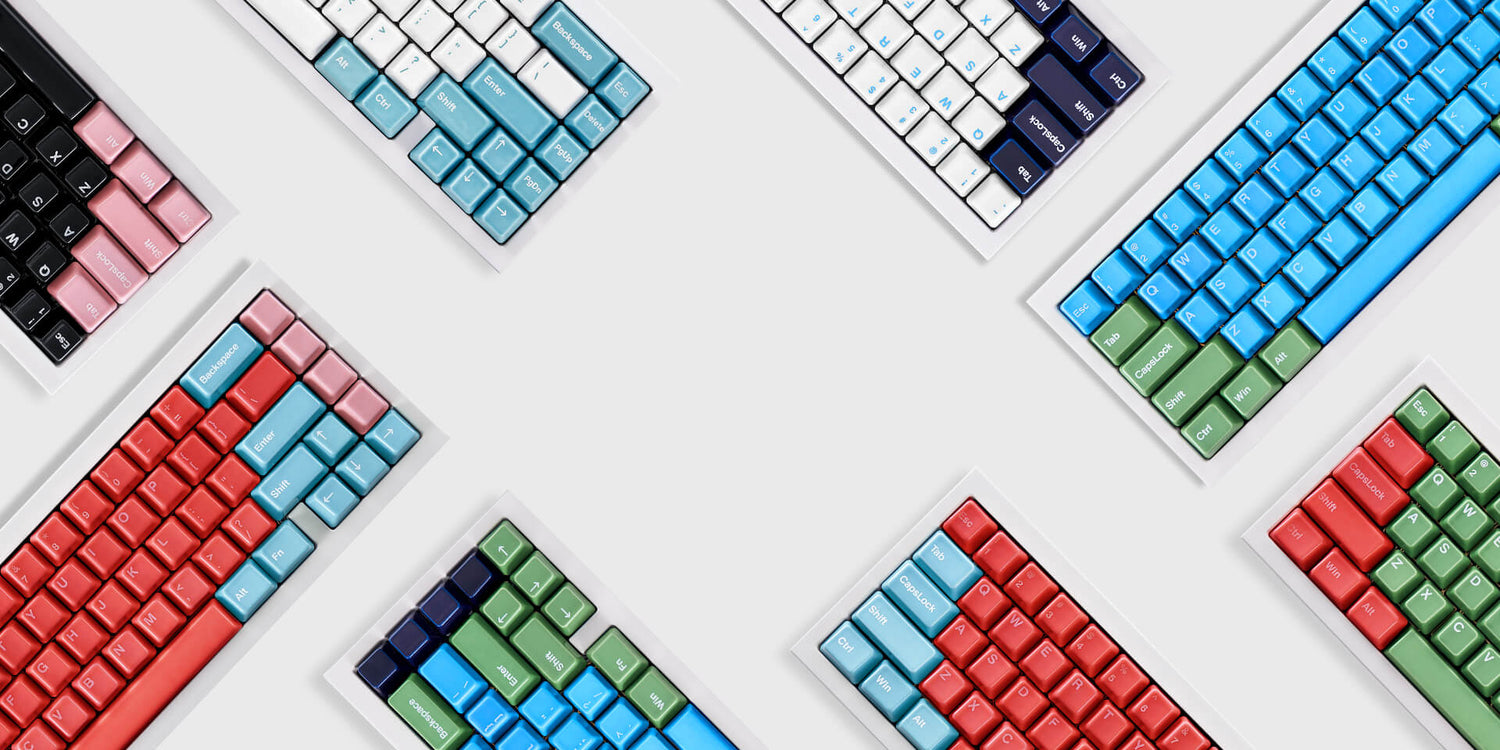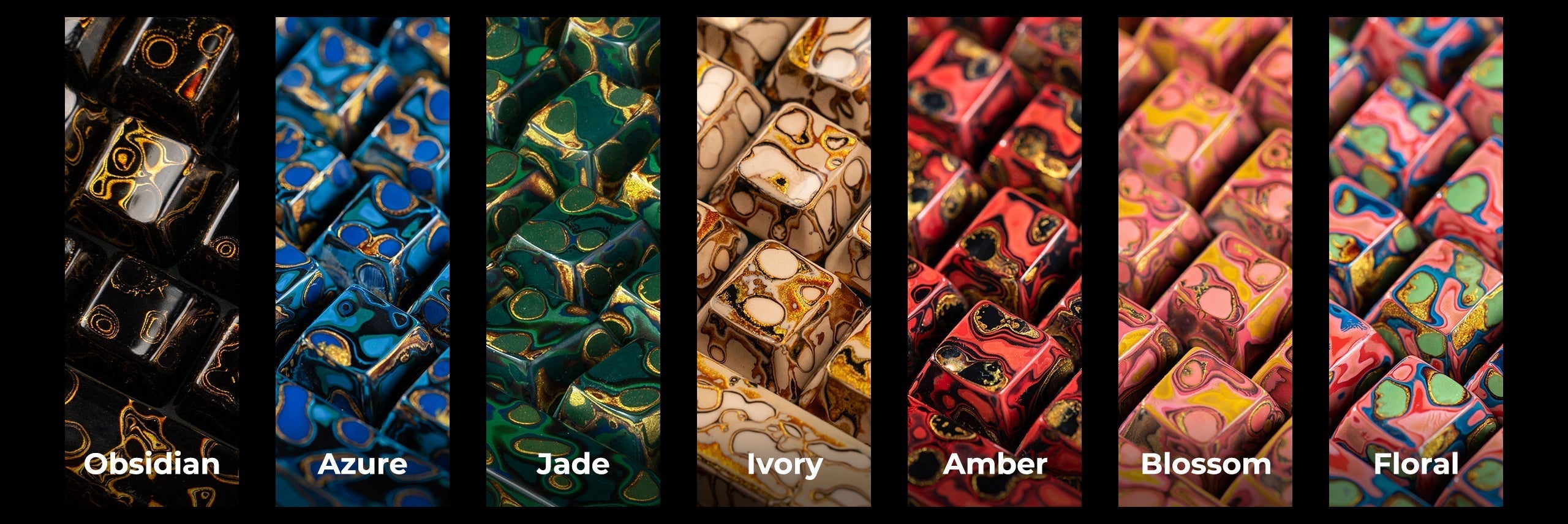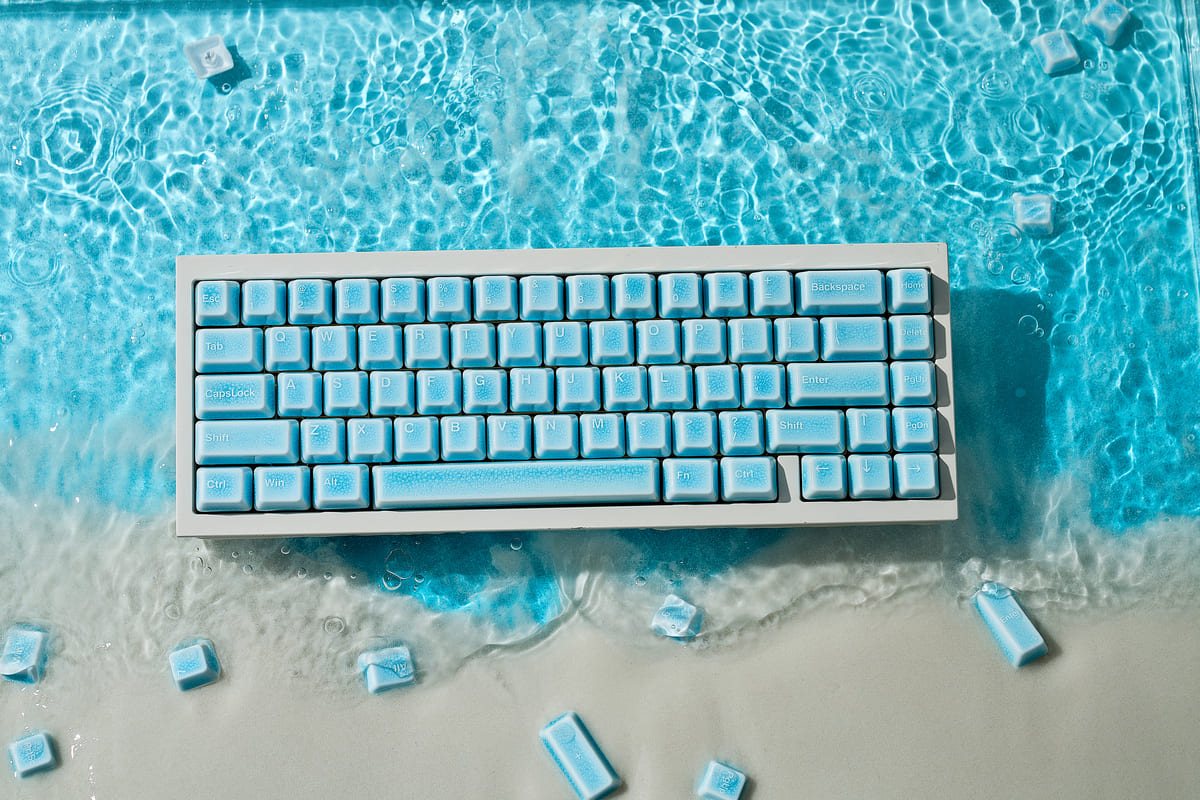Monochrome glazes — sometimes called "solid-color glazes" — transform ceramics through the alchemy of minerals and fire. By harnessing specific compounds within the glaze, artisans achieve stunning, singular hues like celadon green, oxblood red, imperial yellow, ink black, sapphire blue, and pure white. Though defined by simplicity, these glazes embody an enduring truth: true elegance lies in purity.
At Cerakey, we’ve reimagined this ancient art for the modern desktop. Our ceramic keycaps harness the legacy of monochrome glazes, merging timeless aesthetics with tactile excellence.
A Brief History of Monochrome Glazes
Monochrome ceramics dominated early Chinese pottery, with designs prioritizing function over refinement. True artistic mastery emerged during the Song (960–1279 AD) and Ming/Qing dynasties (1368–1912 AD). By the 18th century (China’s High Qing period), monochrome glazes reached their zenith.
These pieces celebrated subtlety: smooth silhouettes, radiant colors, and delicate engraved patterns visible only under light — designs that honored the glaze’s quiet grace while adding depth. Unlike ornate polychrome porcelain, monochrome ceramics radiate natural sophistication, earning reverence as the pinnacle of ceramic refinement.
Timeless Glazes, Reborn for Keycaps
Pure White: The Essence of Porcelain
White glazes — Sweet White, Ivory White, Moon White — define ceramic purity. Though challenging to perfect (requiring near-zero iron content), they became the soul of Song Dynasty porcelain. Yuan Dynasty "Shufu ware" later inspired Ming "Sweet White," a translucent marvel.
Cerakey’s white keycaps capture this legacy: luminous, cool to the touch, and strikingly minimalist.
Deep Blue: Skies and Seas Captured in Glaze
From Mist Blue to Sacrificial Blue (Jilan), blue glazes evolved from Tang Dynasty earthenware to Ming masterpieces. Xuande-era (1426–1435) "Sacrificial Blue" became iconic, prized alongside Sacrificial Red and Sweet White.
Cerakey’s blue keycaps evoke depth and calm, with a glass-like luster that shifts under light.
Vibrant Red: The Rarity of Copper
Copper-based reds, like Tang Dynasty’s rudimentary prototypes, were notoriously unstable. Perfected during Ming Xuande’s reign, Sacrificial Red (Jihong) became a "treasure among a thousand kilns" for its radiant hue.
Cerakey’s red keycaps channel this intensity — warm, saturated, and impossible to ignore.
Imperial Yellow: Harmony in Hue
Yellow glazes (Egg-Yolk Yellow, Ginger Yellow) symbolized status. Ming "Tender Yellow" set the standard: mellow yet regal.
Cerakey’s yellow keycaps balance richness with subtlety, radiating refined energy.
Celadon Green: The Spirit of Jade
Celadon — ranging from Moon White to Plum Green — is among ceramics’ oldest glazes. Song Dynasty kilns (like Guan, Ru, and Longquan) mastered its jade-like serenity.
Cerakey’s celadon keycaps offer tranquil elegance with a soft, tactile matte finish.
Rich Black: The Depth of Lacquer
Black glazes thrived across dynasties, from Han "lead-black" to Qing "Mirror Black" (Wujin). Song "Jian ware" teacups, designed for tea ceremonies, remain iconic.
Cerakey’s black keycaps are profound and velvety, absorbing light while revealing subtle texture.
Why Monochrome Matters
Without decorative paints, monochrome glazes rely on pure material beauty: flawless surfaces, precise curves, and light-responsive depth. This demands mastery — every hue, texture, and silhouette must harmonize. At Cerakey, we honor this tradition. Our monochrome keycaps aren’t just functional; they’re miniature sculptures. Crafted with high-fired ceramic, they offer:
- Cool, marble-like tactility
- Light-catching translucency
- A timeless aesthetic that transcends trends
Experience the quiet power of monochrome. Elevate your keyboard with glazes that have captivated artisans for millennia.














Deixar comentário
Este site é protegido por hCaptcha e a Política de privacidade e os Termos de serviço do hCaptcha se aplicam.